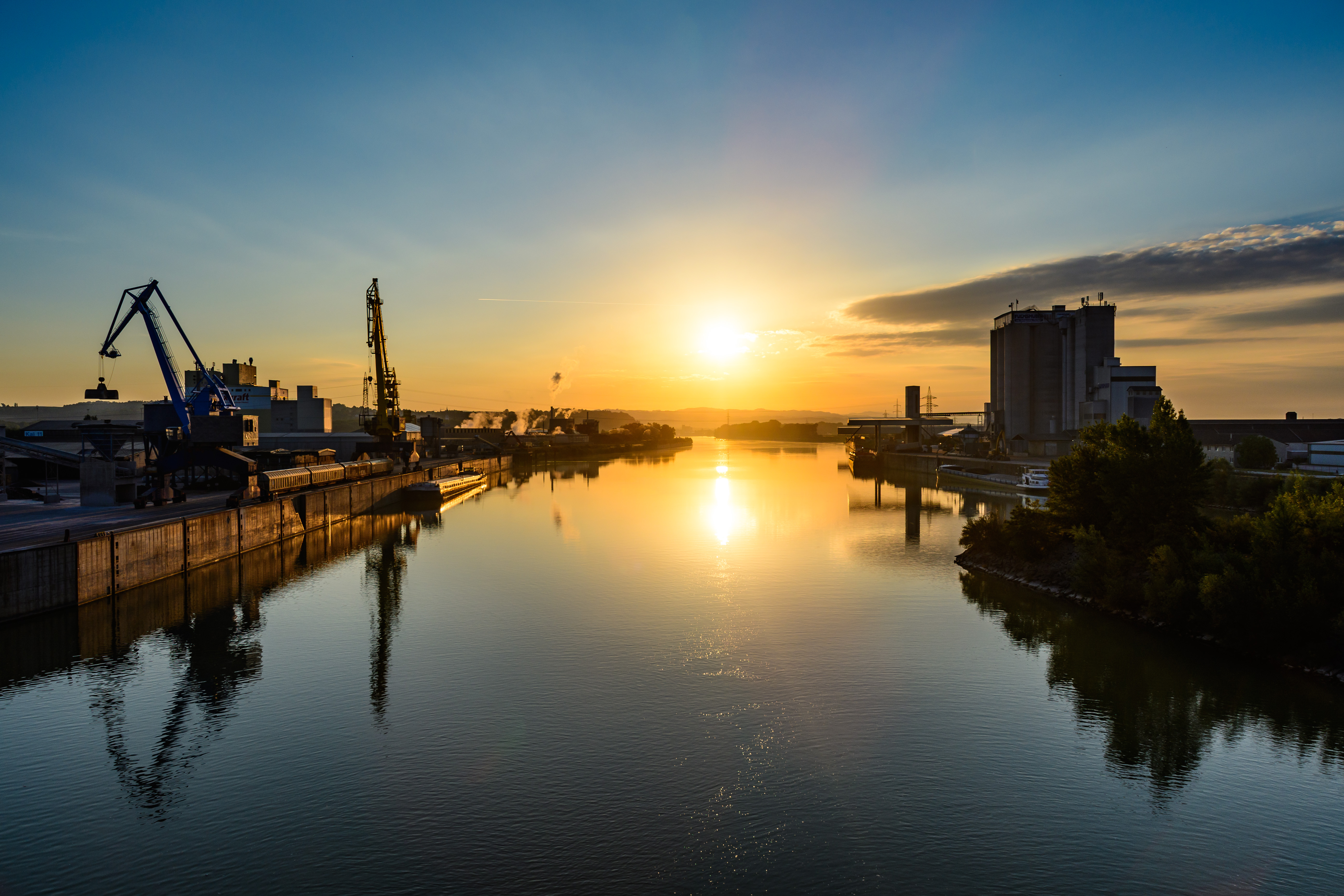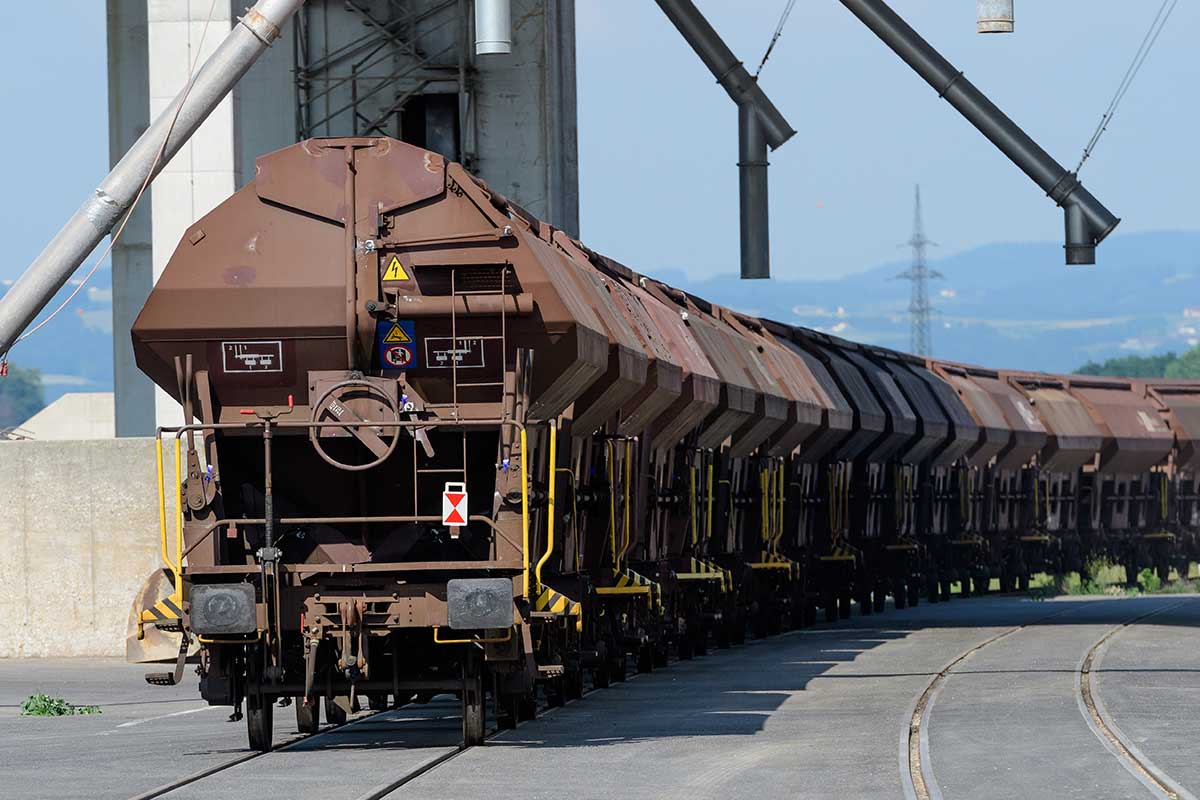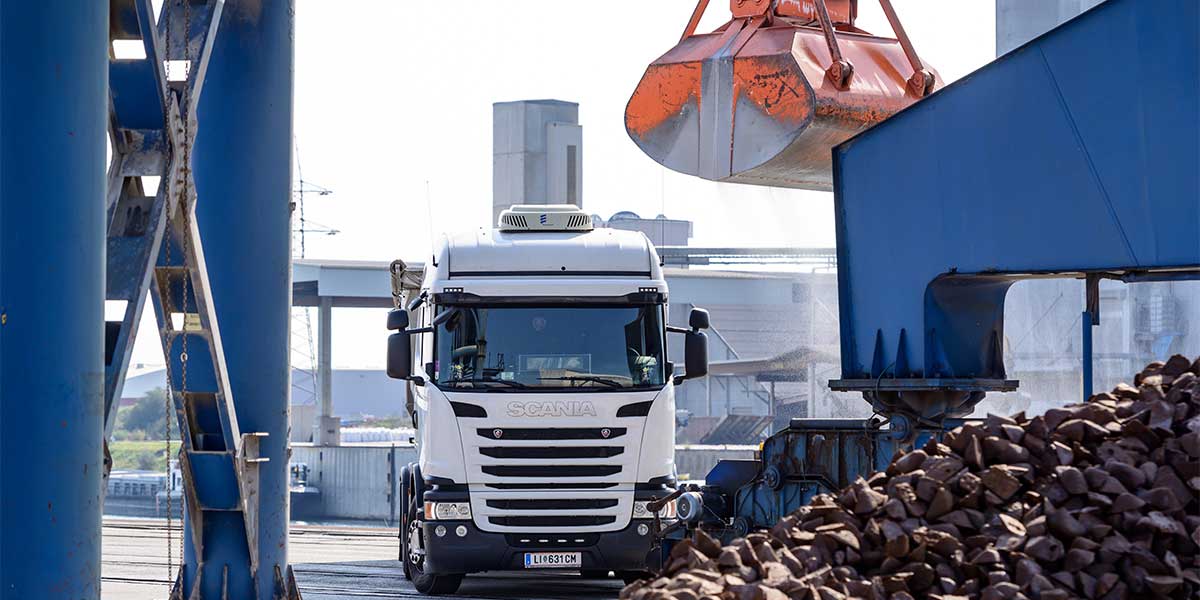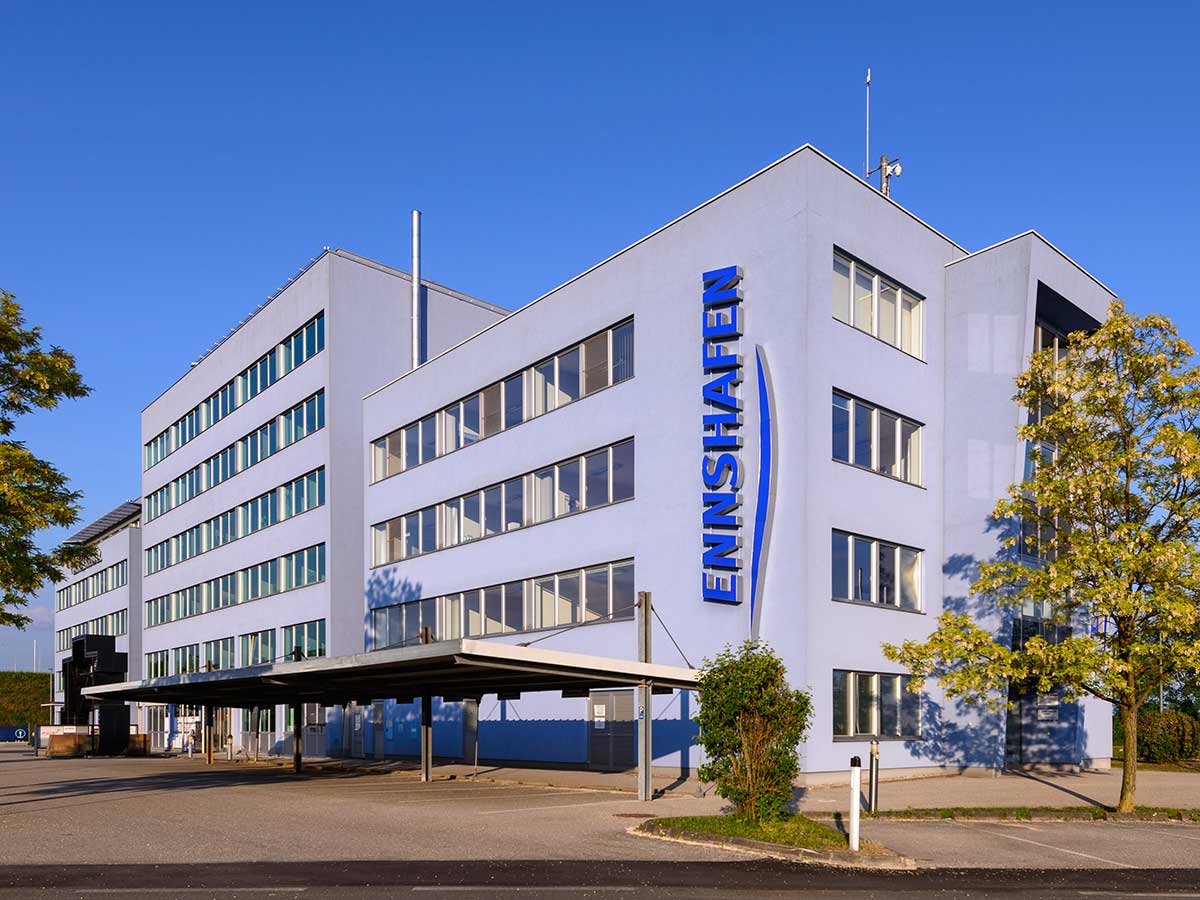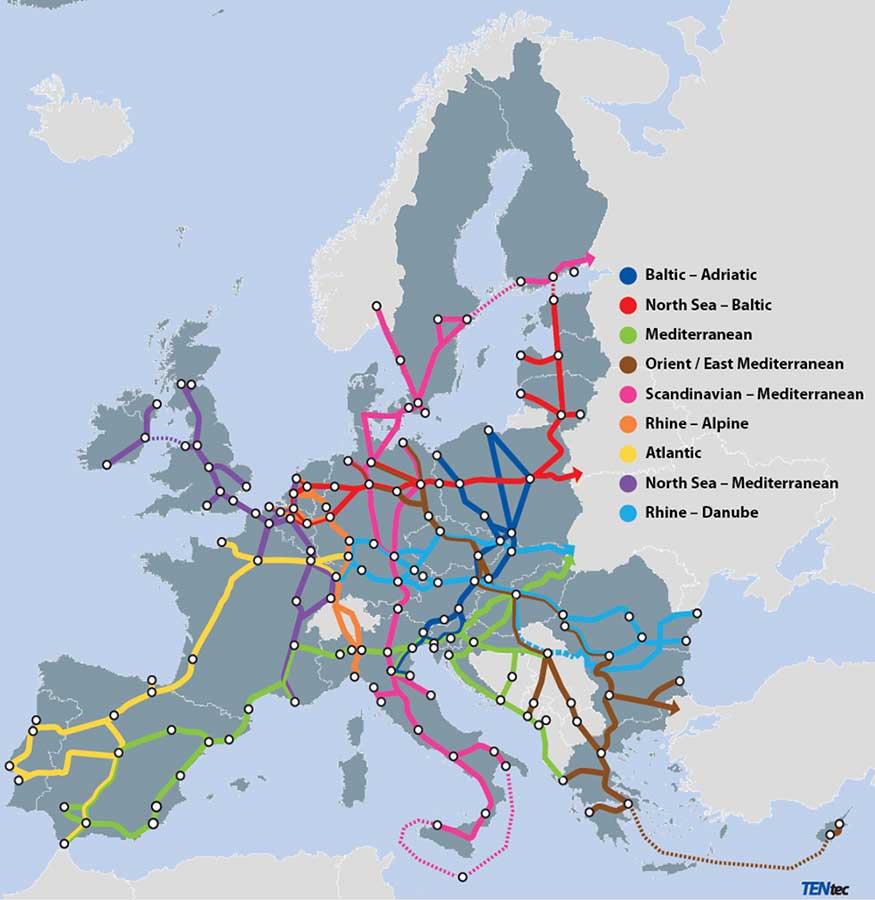LOCATION >>
LOCATION >>
INFRASTRUCTURE
INFRASTRUCTURE
ENNSHAFEN LOCATION
We unite expertise.
As a hub of cosmopolitanism and neutrality, the ENNSHAFEN port makes its infrastructure available to all transshipping and manufacturing companies. ENNSHAFEN is home to more than 60 businesses, which employ around 2,600 people.
The synergy that exists between privately owned spaces and public infrastructure investment generates unique potential for development. We can offer companies properties of varying sizes.
This partnership between the public sector and private enterprise, our economically sound long-term vision, and our efficient organization all provide a solid foundation for the continuing expansion of our port infrastructure – an outcome that benefits the wider economy. The ENNSHAFEN port and the business parks of Enns and Ennsdorf are collaboratively marketed by Ennshafen OÖ GmbH and Ennshafen NÖ GmbH as EHG Ennshafen GmbH.
Within the Trans-European Transport Network (TEN-T) of waterways, the ENNSHAFEN port is defined as one of the two Austrian core nodes in the Rhine-Danube Corridor. (Link to additional information) It benefits from a central location in Austria and indeed Europe, with direct access to the Trans-European Transport Network. It guarantees ideal conditions thanks to an efficient infrastructure, roads, quays, and railway systems. Upper Austria and the western part of Lower Austria are among the strongest industrial regions of the country, with a key focus on exports. The region also offers a professionally qualified population and high levels of affluence, making it a place to do successful business and live well. The advantages of the ENNSHAFEN port as a location thus translate to your competitive advantage.
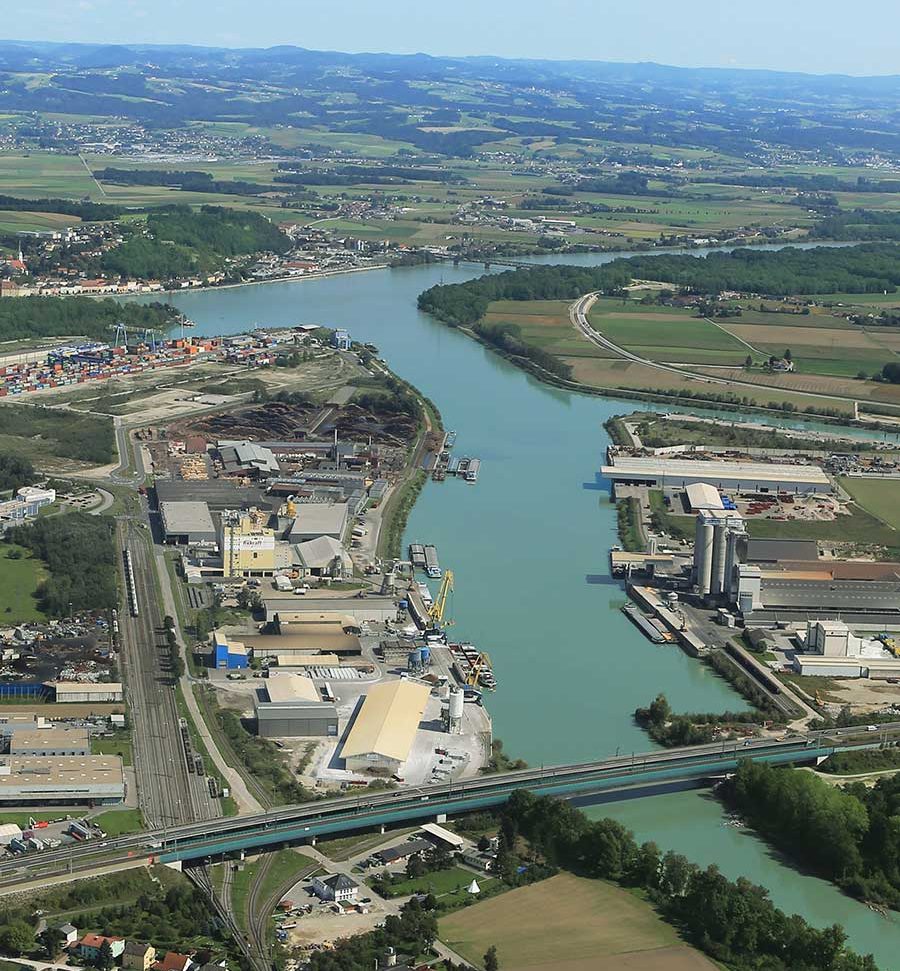
ENNSHAFEN LOCATION
We unite expertise.
As a hub of cosmopolitanism and neutrality, the ENNSHAFEN port makes its infrastructure available to all transshipping and manufacturing companies. ENNSHAFEN is home to more than 60 businesses, which employ around 2,600 people.
The synergy that exists between privately owned spaces and public infrastructure investment generates unique potential for development. We can offer companies properties of varying sizes.
This partnership between the public sector and private enterprise, our economically sound long-term vision, and our efficient organization all provide a solid foundation for the continuing expansion of our port infrastructure – an outcome that benefits the wider economy. The ENNSHAFEN port and the business parks of Enns and Ennsdorf are collaboratively marketed by Ennshafen OÖ GmbH and Ennshafen NÖ GmbH as EHG Ennshafen GmbH.
Within the Trans-European Transport Network (TEN-T) of waterways, the ENNSHAFEN port is defined as one of the two Austrian core nodes in the Rhine-Danube Corridor. (Link to additional information) It benefits from a central location in Austria and indeed Europe, with direct access to the Trans-European Transport Network. It guarantees ideal conditions thanks to an efficient infrastructure, roads, quays, and railway systems. Upper Austria and the western part of Lower Austria are among the strongest industrial regions of the country, with a key focus on exports. The region also offers a professionally qualified population and high levels of affluence, making it a place to do successful business and live well. The advantages of the ENNSHAFEN port as a location thus translate to your competitive advantage.
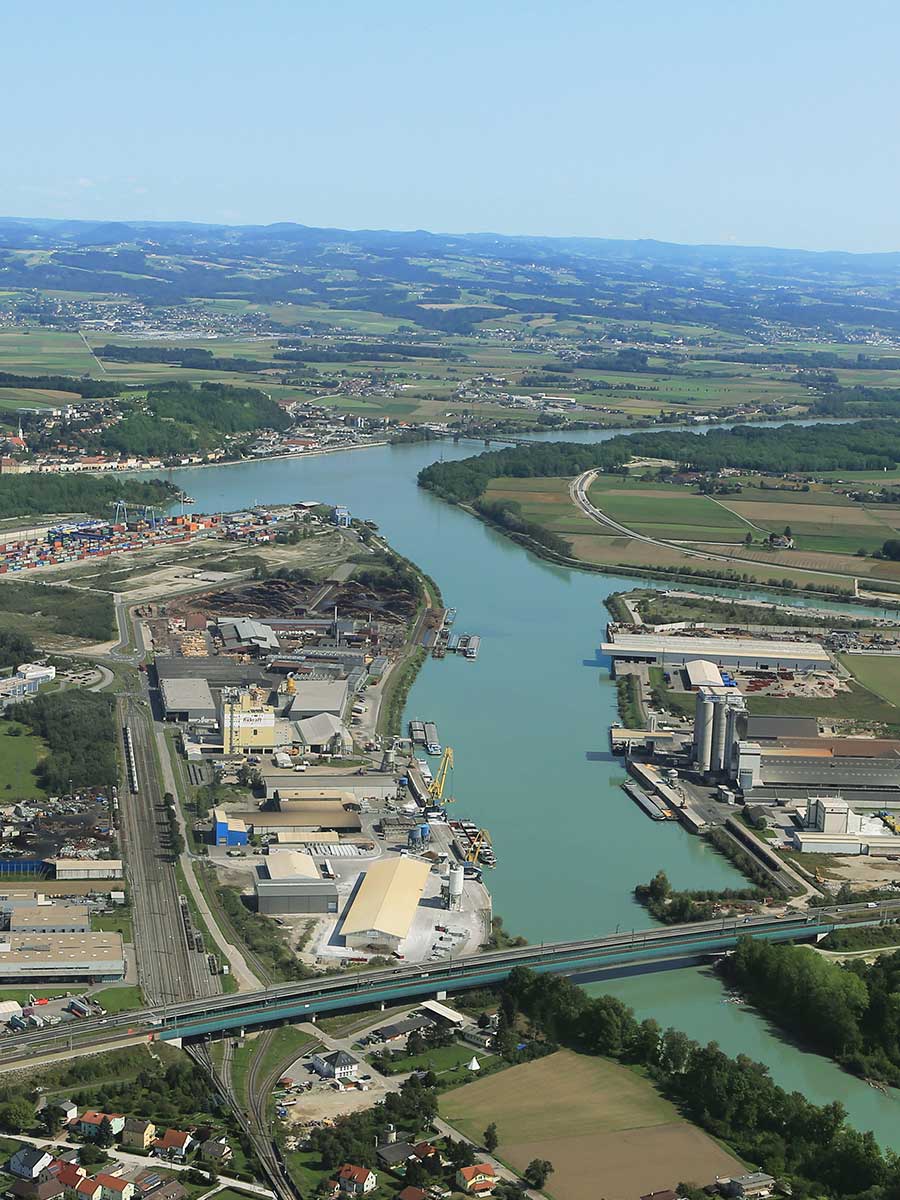
ENNSHAFEN
TEN-T CORE NODE
We connect Europe.
The Trans-European Transport Network (TEN-T) is the Europe-wide system of transportation that connects the continent economically and logistically. TEN-T facilitates sensible, integrated planning of Europe’s road, railway, waterway, and aviation infrastructure, pointing the way ahead for a multilateral infrastructure policy to boost the European market while improving the continent’s transportation, energy, and telecommunications networks. The network is expanded on an ongoing basis across different modes of transport and a wide geographic spread.
The trans-European core network forms its backbone, including the most important European transportation links. There are plans for its completion by 2030, leaving it with 50,762 kilometers of high-speed and conventional rail infrastructure, 34,401 kilometers of road infrastructure, 12,880 kilometers of waterway infrastructure, and 92 airports. At the same time, construction is to be carried out on the overall network and regional connections. The entire network by 2050 in numbers: 138,072 kilometers of high-speed and conventional rail infrastructure, 136,706 kilometers of road infrastructure, 23,506 kilometers of waterway infrastructure, and 260 airports. Shifting freight transport to water and rail makes a significant contribution to reducing carbon emissions.
Four core network corridors run through Austria: the Baltic-Adriatic Corridor, the Orient-East Mediterranean Corridor, the Scandinavian-Mediterranean Corridor, and the Rhine-Danube Corridor. The ENNSHAFEN port is one of the two Austrian core nodes in the Rhine-Danube Corridor.
ENNSHAFEN
TEN-T CORE NODE
We connect Europe.
The Trans-European Transport Network (TEN-T) is the Europe-wide system of transportation that connects the continent economically and logistically. TEN-T facilitates sensible, integrated planning of Europe’s road, railway, waterway, and aviation infrastructure, pointing the way ahead for a multilateral infrastructure policy to boost the European market while improving the continent’s transportation, energy, and telecommunications networks. The network is expanded on an ongoing basis across different modes of transport and a wide geographic spread.
The trans-European core network forms its backbone, including the most important European transportation links. There are plans for its completion by 2030, leaving it with 50,762 kilometers of high-speed and conventional rail infrastructure, 34,401 kilometers of road infrastructure, 12,880 kilometers of waterway infrastructure, and 92 airports. At the same time, construction is to be carried out on the overall network and regional connections. The entire network by 2050 in numbers: 138,072 kilometers of high-speed and conventional rail infrastructure, 136,706 kilometers of road infrastructure, 23,506 kilometers of waterway infrastructure, and 260 airports. Shifting freight transport to water and rail makes a significant contribution to reducing carbon emissions.
Four core network corridors run through Austria: the Baltic-Adriatic Corridor, the Orient-East Mediterranean Corridor, the Scandinavian-Mediterranean Corridor, and the Rhine-Danube Corridor. The ENNSHAFEN port is one of the two Austrian core nodes in the Rhine-Danube Corridor.
CONTACT/DIRECTIONS
IMPRESS | DATA PROTECTION
2024 © EHG Ennshafen GmbH
+43 7223 84151-0 | office@ennshafen.at

